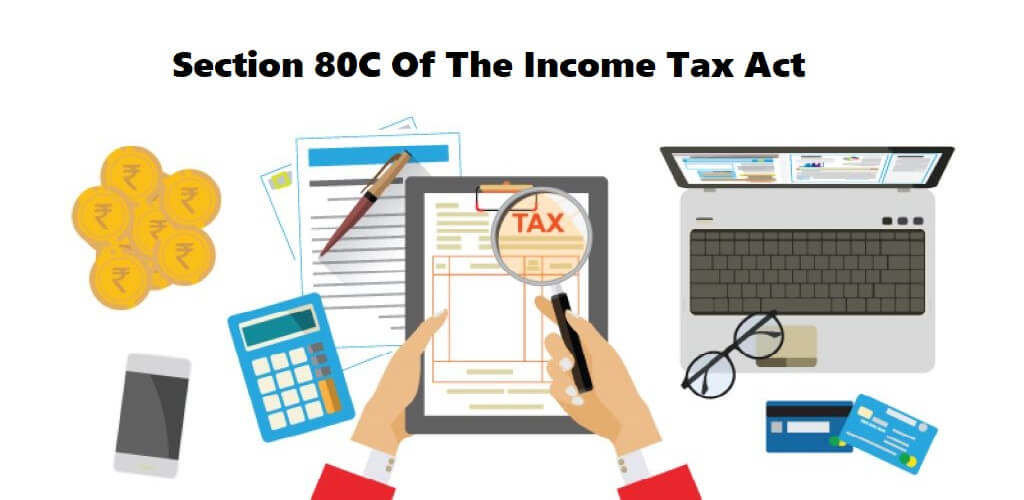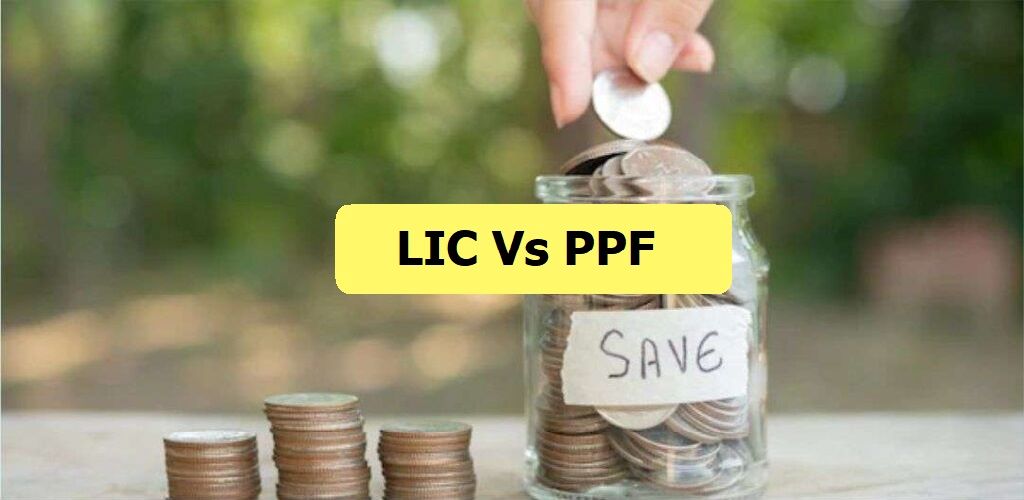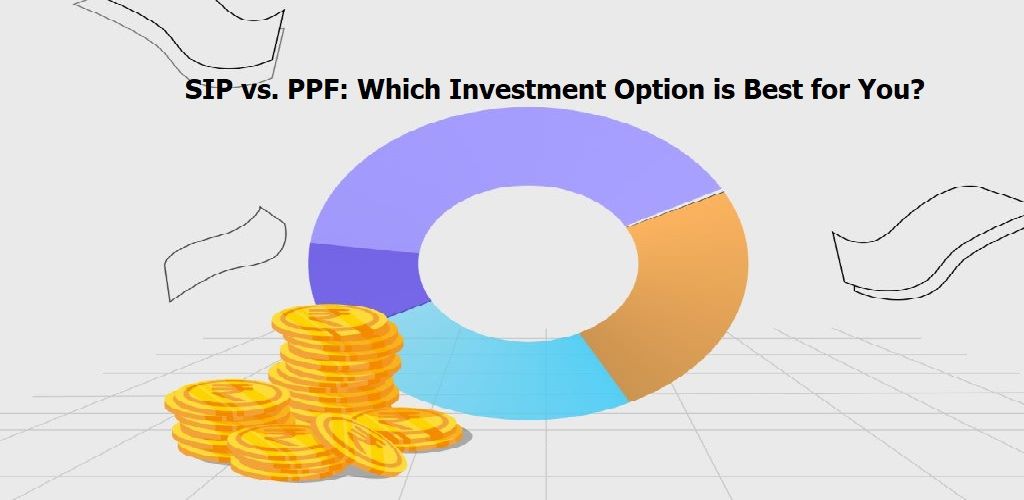As living costs are rising and economies are changing, Indians are feeling the pressure to stockpile their earnings. That’s why saving on taxes has become a smart move to stay ahead of the game.
However, the true game-changer is Section 80C of the Income Tax Act of 1961. It’s all about saving money on your taxes by providing numerous options to cut down your tax bills. By taking advantage of the deductions provided under this section, you can hold onto more of your hard-earned money.
This post will help you learn about Section 80C and its variations so you can make your money work harder.
What’s Section 80C?
Section 80C is like a special coupon from the government that helps you save money on your taxes.
Imagine you have a big jar where you save all your money. Now, the government is saying to you that if you put some money in certain places, they will give you a discount on your taxes.
That’s basically what Section 80C is all about. It’s a way for the government to encourage people to save for the future while also reducing their tax bills.
Here’s a simple example to understand it!
So, in simple words, Section 80C is like a deal with the government: you save some money for your future, and they give you a discount on your taxes.
List Of Investment Options Under Section 80C
The following table showcases the list of investment options available under the section 80C. This means that if you choose to invest in any of the following plans, you will be eligible for tax benefits under the section.
| Investment Option | Average Interest Rate | Lock-In Period |
| Equity Linked Savings Scheme (ELSS) | 12%-15% | 3 Years |
| NPS (National Pension Scheme) | 8%-10% | Till 60 Years Of Age |
| Unit Linked Insurance Plan (ULIP) | 8%-10% | 5 Years |
| Tax Saving FD | Up To 8.40% | 5 Years |
| Public Provident Fund (PPF) | 7.90% | 15 Years |
| Senior Citizen Savings Scheme (SCSS) | 8.60% | 5 Years (Can Be Extended For Other 3 Years) |
| National Savings Certificate | 7.9% | 5 Years |
| Sukanya Samriddhi Yojana | 8.50% | Till Girl Child Reaches 21 Years Of Age |
Understanding Each Section Of 80C
Let’s understand each variation of Section 80 C in detail:
- 80CC
This section was previously allowed to give deductions for investing in certain new shares. However, now this section has been removed from the tax laws. It was deleted by the Finance (No. 2) Act of 1996, and this change was made effective from April 1, 1993.
- 80CCA
Section 80CCA of the Indian Income Tax Act allows individuals or Hindu Undivided Families (HUF) to claim deductions for deposits made under the National Savings Scheme or payments towards certain annuity plans. If you put money into these schemes or plans from your taxable income, you can deduct the amount deposited, up to a certain limit, from your total taxable income.
For example, if you deposit money in a savings scheme provided by the Life Insurance Corporation, you can deduct that amount from your taxable income. The maximum deduction allowed is Rs. 20,000 per year, but it was higher in previous years.
Additionally, interest rates earned on deposits under these schemes are usually not taxable, except under certain circumstances mentioned in the Act.
- 80CCB
This section lets individuals or HUFs claim deductions for investing in certain mutual funds called Equity Linked Savings Schemes (ELSS). If you put money into these funds from your income, you can deduct that amount, up to Rs. 10,000 per year from your total taxable income.
If you withdraw the invested amount, either by selling the units or if the scheme ends, that money will be counted as your income for that year and taxed accordingly. Even if there’s a change in your family situation, like a partition in a HUF or the dissolution of a group of people who invested together, the tax rules still apply to the person who receives the income from the investment.
- 80CCC
This section lets individuals claim deductions for contributing to certain pension funds. Suppose you put money into an annuity plan offered by the Life Insurance Corporation of India or other specified insurers from your taxable income. In that case, you can deduct that amount, up to Rs. 1,50,000 per year, from your total taxable income.
However, if you withdraw the money from the fund, either by surrendering the annuity plan or receiving a pension from it, that amount will be counted as your income for the year you withdraw it, and you’ll have to pay taxes on it.
Also, if you claim a deduction under this section, you can’t claim the same amount for deductions under section 80C for any assessment year beginning on or after April 1, 2006.
- 80CCD
Section 80CCD allows individuals employed by the Central Government or any other employer to claim deductions for contributing to a pension scheme launched by the Central Government. If you’re eligible, you can deduct the amount you contribute to your pension account from your total taxable income.
For employees, you can claim up to 10% of your salary, and for others, up to 20% of your gross total income. Additionally, you can claim an extra deduction of up to Rs. 50,000, regardless of the limits mentioned earlier.
If your employer also contributes to your pension account, you can deduct that amount too, up to a certain limit based on who the employer is. However, if you withdraw any amount from your pension account, either by closing it or opting out, it will be counted as your income for that year and taxed accordingly.
- 80CCE
Sections 80C, 80CCC, and 80CCD are like different places where you can get these deductions by investing or spending money on certain things, like life insurance or a pension plan.
Now, there’s a rule called 80CCE. It says you can’t get unlimited deductions from these sections. You can only get up to Rs. 1,50,000 deducted from your taxes using these sections altogether. So, if you use one or more of these sections to save on taxes, the total amount you can save can’t be more than 1,50,000 rupees.
- 80CCF
This section deals with deductions for long-term infrastructure bonds. If you’re an individual or part of a HUF and you have invested in these types of special bonds for supporting projects like power plants or highways, you can get a tax deduction.
Here’s how it works: You can deduct the whole amount you’ve invested in these bonds from your total income. But there’s a limit. You can only deduct up to Rs. 20,000.
This special rule was introduced to encourage people to invest in important infrastructure projects by giving them a tax break. The government decides which bonds count for this deduction, and they let everyone know.
- 80CCG
80CCG is all about getting tax deductions for investing in certain stock market schemes, known as the Equity Savings Scheme. If you’re an individual and you invest in listed equity shares or units of an equity-oriented fund through this scheme, you could get a tax deduction.
The deduction is 50% of the amount you’ve invested, but it can’t be more than Rs. 25,000. Now, there are some rules you need to follow to qualify for this deduction. Your total income can’t be more than Rs. 12 lakhs. You must be a new investor under this scheme. Also, your investment needs to stay locked in for 3 years.
- 80CCH
This section is about getting tax deductions for contributing to the Agniveer Corpus Fund. If you’re an individual and you’re part of the Agnipath Scheme and you contribute money to the Agniveer Corpus Fund after November 1, 2022, you can get a tax deduction. The deduction is for the whole amount you’ve put into this fund.
The Agnipath Scheme is basically the program for joining the Indian Armed Forces. The Agniveer Corpus Fund is where all the contributions from people in this scheme, along with the government’s contributions and the interest earned, are kept.
Deduction Limits Of Each Section
Here’s a simple table representing the deduction limits of each section!
| Section | Deduction Limits |
| 80C | Rs. 1.5 Lakhs |
| 80CCA | Rs. 20,000 Per Year |
| 80CCB | Rs. 10,000 Per Year |
| 80CCC | Rs. 1.5 Lakhs |
| 80CCD | Employed: 10% Of Basic Salary + DA Self-Employed: 20% Of Total Income |
| 80CCE | Rs. 1.5 Lakhs |
| 80CCF | Rs. 20,000 |
| 80CCG | Rs. 25,000 |
How To Maximize Benefits From Section 80C?
To get the most out of Section 80C, try these tricks:
- Make Proper Use Of Limit: The maximum deduction allowed under Section 80C is ₹1.5 lakh per financial year. Aim to invest up to this limit to maximize your tax savings.
- Make A Wise Investment: Choose from a range of options eligible under Section 80C, such as Employee Provident Fund (EPF), Public Provident Fund (PPF), National Savings Certificate (NSC), Equity Linked Savings Scheme (ELSS), and more. Consider your financial goals and risk appetite before investing.
- Try To Plan Early: Start planning your investments at the beginning of the financial year to ensure you utilize the entire limit and benefit from compounding returns.
- Keep Monitoring & Reviewing: Keep track of your investments and review them periodically to ensure they are aligned with your financial goals and market conditions.
- Go For SSY: If you have a daughter under 10, consider going for Sukanya Samriddhi Yojana. It helps you save for her future and get tax benefits.
What Are The Common Mistakes To Avoid In Section 80C Tax Savings?
Avoid these common mistakes to make the most of your Section 80C tax savings:
- Surpassing Deduction Limit: The Section 80C deduction limit is ₹1.5 lakh. Investing more won’t yield extra tax benefits.
- Not Providing Proper Documents: Remember to keep receipts or proofs of investments like PF contribution statements, tuition fee receipts, and home loan repayment certificates. These documents are crucial for claiming deductions.
- Not Understanding Tax Implications: Lack of understanding about tax implications can lead to below-average choices. Research or seek advice to grasp how each investment affects taxes.
- Relying Solely On Traditional Options: While PF and other traditional options are popular, diversifying into instruments like ELSS can provide better returns. Explore a mix of options for optimal tax savings and wealth creation.
- Not Consulting Tax Advisor: Tax laws can be complex. Consulting a tax advisor can help make informed decisions and maximize tax savings within legal boundaries.
Frequently Asked Questions
Listed below are the frequently asked questions related to the Section 80C of the Income Tax Act.
Yes, you can invest in multiple options to maximize your tax savings, but the total deduction cannot exceed Rs. 1.5 lakh.
Yes, you can claim tax deductions for tuition fees paid for up to two children’s education.
Some investments (like mutual funds) carry market risks, but options like PF and life insurance are relatively safer.
Yes, you can include the principal repayment part of your home loan in Section 80C.
No, health insurance premiums are covered under a different section called Section 80D.
Yes, you need to make investments before the end of the financial year to claim deductions for that year.







